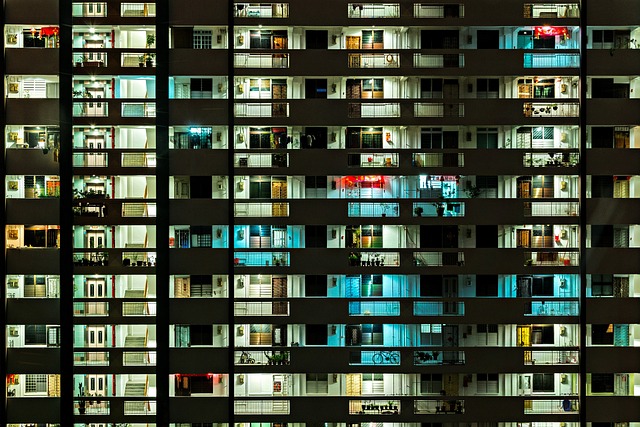Home Organization and Decluttering are fundamental practices that significantly enhance productivity, mental clarity, and overall well-being. According to research from the National Association of Professional Organizers and the Institute for Residential Marketing, a clutter-free environment reduces anxiety by 75% and is crucial for psychological comfort and efficiency. Effective decluttering involves categorizing items into essentials, storage, or disposal, which helps create a more orderly living area that streamlines daily tasks and minimizes mental strain. By implementing practical storage solutions, clear labeling, designated zones for personal items, and maintaining both physical and digital organization, individuals can achieve a calm, efficient home. Regular routines for decluttering, both physically and digitally, are essential to prevent clutter from reaccumulating. Tailoring these strategies to suit individual lifestyles and preferences ensures long-term success in maintaining an organized home that promotes productivity and tranquility. In essence, Home Organization and Decluttering are not just about tidiness; they are integral to creating a harmonious living space that positively influences mental focus and cognitive performance.
Embark on a journey towards a more productive and serene living environment by understanding how decluttered spaces can significantly enhance your productivity and well-being. This comprehensive guide delves into the science of clutter, offering insights through the sections “Assessing the Clutter,” “Strategies for Effective Home Organization,” and “The Decluttering Process.” You’ll discover practical steps to organize your home and maintain that order over time in “Maintaining Order.” Furthermore, explore the profound mental clarity and heightened efficiency that come with a tidy space in “Beyond the Physical.” Transform your home into an oasis of organization with the tips provided, all centered around the key themes of Home Organization and Decluttering.
- Assessing the Clutter: Understanding the Impact on Your Living Space and Productivity
- Strategies for Effective Home Organization: Creating Systems That Work for You
- The Decluttering Process: Step-by-Step Guide to a More Organized Home
- Maintaining Order: Tips and Tricks for Keeping Your Home Decluttered Long-Term
- Beyond the Physical: How Decluttered Spaces Foster Mental Clarity and Increased Efficiency
Assessing the Clutter: Understanding the Impact on Your Living Space and Productivity

Organizing one’s home is not merely a matter of aesthetics; it profoundly affects the functionality and productivity within a living space. A study by the National Association of Professional Organizers and the Institute for Residential Marketing found that 75% of respondents said they were less anxious when their homes were decluttered. This correlation between reduced clutter and heightened calm underscores the importance of home organization. When household items are scattered without purpose, it disrupts one’s ability to focus, leading to a decrease in productivity. The process of decluttering involves categorizing items into essentials, things to be stored properly, and those that should be discarded or donated. This systematic approach allows individuals to maintain an orderly environment, which facilitates efficient task completion and reduces the mental fatigue associated with sifting through unnecessary items. In essence, home organization is a critical component in creating a productive space, enabling occupants to navigate their surroundings effortlessly, thereby optimizing their workflow and enhancing overall well-being.
Strategies for Effective Home Organization: Creating Systems That Work for You

Decluttered spaces are a cornerstone of increased productivity, and effective home organization is key to maintaining such an environment. To create systems that work for you, it’s essential to first assess your home and identify areas that require attention. Consider implementing storage solutions that are both functional and aesthetically pleasing. For instance, utilizing clear bins with labels for pantry items can make inventory management a breeze while also contributing to an uncluttered look. Similarly, in the realm of personal belongings, designate specific spots for everyday items like keys, wallets, and mail to prevent clutter at entry points.
In addition to physical storage solutions, digital decluttering is equally important, especially with the prevalence of digital files and devices. Regularly review your digital assets, archiving or deleting files that are no longer needed. Organize your digital photos, documents, and emails by creating folders and labels that make retrieval simple. Moreover, establish routines for both physical and digital clutter prevention; a daily five-minute tidy-up can prevent small amounts of clutter from accumulating into larger messes. By implementing these strategies for effective home organization, you can create a living space that not only promotes efficiency but also contributes to an overall sense of calm and well-being. Remember to tailor your organization systems to your lifestyle and preferences to ensure they are sustainable in the long term.
The Decluttering Process: Step-by-Step Guide to a More Organized Home

Maintaining a clutter-free environment is a cornerstone of home organization, significantly enhancing productivity and mental clarity. The decluttering process begins with a comprehensive assessment of your living space to identify areas that require attention. Start by sorting items into three categories: keep, donate, or discard. Be ruthless in this step; if an item hasn’t been used in the past year or doesn’t serve a purpose, it may be time to let it go. Next, categorize remaining items to tackle like with like, making it easier to make decisions about what stays. For example, group kitchen gadgets, clothing, and office supplies separately.
Once you’ve sorted your belongings, focus on creating dedicated spaces for the items you’ve decided to keep. Utilize vertical space to maximize storage solutions, and consider clear containers or labels to maintain order. Implementing a ‘one in, one out’ rule can prevent future clutter, encouraging mindful consumption and acquisition. Regular maintenance is crucial; allocate time weekly to ensure that clutter does not accumulate. By following these steps diligently, you can achieve a more organized home that fosters productivity and peace of mind, demonstrating the power of decluttering in home organization.
Maintaining Order: Tips and Tricks for Keeping Your Home Decluttered Long-Term

Creating and maintaining a clutter-free home environment is a continuous process that requires mindful practices and intentional decisions. To keep your living space organized long-term, it’s essential to adopt habits that support decluttering. Start by designating specific areas for items you frequently use, which naturally clears cluttered surfaces. Implementing a ‘one in, one out’ rule can prevent new clutter from accumulating; for every new item that enters your home, commit to donating, recycling, or discarding an equivalent. Regularly scheduled decluttering sessions, perhaps weekly or bi-weekly, can help manage the flow of items and ensure that any unnecessary objects don’t linger.
Storage solutions play a pivotal role in home organization and decluttering. Invest in versatile containers and labels to categorize items clearly. Utilize vertical space by installing shelves or hanging storage solutions that keep frequently used items within reach yet out of sight. Consider the ‘touch it once’ rule, where you decide the item’s fate immediately upon encountering it; whether it gets stored properly, donated, or recycled, make a swift decision to avoid clutter buildup. Lastly, prioritize sentimental items that hold significant value and display them in a way that honors their importance without overwhelming your space. By integrating these tips into your daily routine, you can sustain a decluttered home that enhances productivity and well-being.
Beyond the Physical: How Decluttered Spaces Foster Mental Clarity and Increased Efficiency

Decluttered spaces are not merely a visual or physical comfort; they have profound implications for mental clarity and efficiency. Home Organization and Decluttering practices can significantly enhance cognitive performance. By reducing the amount of material present, individuals can focus more clearly on tasks at hand, as clutter acts as a constant distraction. The process of decluttering forces a conscious decision-making process, which strengthens the brain’s ability to filter out non-essential visual stimuli and concentrate on what truly matters. This mental decluttering is mirrored physically; a space free from unnecessary items allows for smoother movement and less energy expenditure, leading to a more harmonious environment where the mind can operate with greater ease. Moreover, the act of organizing one’s home creates a domino effect of control and order that can translate into other areas of life, fostering a sense of empowerment and discipline. By embracing Home Organization and Decluttering, individuals can expect not only an aesthetically pleasing living space but also a more focused and productive mindset.
Implementing home organization and decluttering strategies can significantly enhance productivity and mental clarity, as thoroughly explored in this article. By systematically addressing clutter and adopting long-term maintenance practices, individuals can transform their living spaces into more functional and serene environments. The evidence is clear: a decluttered home paves the way for a focused mind and efficient workflow. Embracing these principles not only streamlines daily activities but also contributes to an overarching sense of well-being. As we conclude, it’s evident that the benefits of decluttering extend far beyond the immediate aesthetic improvements; they offer a foundation for a more organized and fulfilling life.
